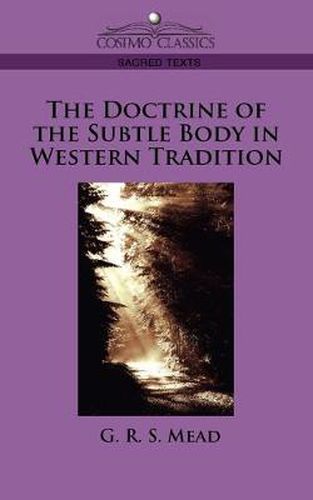Readings Newsletter
Become a Readings Member to make your shopping experience even easier.
Sign in or sign up for free!
You’re not far away from qualifying for FREE standard shipping within Australia
You’ve qualified for FREE standard shipping within Australia
The cart is loading…






This title is printed to order. This book may have been self-published. If so, we cannot guarantee the quality of the content. In the main most books will have gone through the editing process however some may not. We therefore suggest that you be aware of this before ordering this book. If in doubt check either the author or publisher’s details as we are unable to accept any returns unless they are faulty. Please contact us if you have any questions.
What… is the use, in the resurrection, of a body of flesh, blood, sinews, and bones, of limbs and organs for functions of the flesh, such as eating and drinking, excretion and procreation? Are we to continue to do all these things for eternity? -from The Resurrection-Body The concept that the physical body is but a manifestation of a more numinous expression of the soul sounds very Eastern to modern ears, but in fact it was one of the foundations of Christianity that the tradition abandoned long ago. In this short but profound study, first published in 1919, one of the greatest thinkers on the origins of Christianity and a renowned expert on Gnostic and Hermetic literature reconnects us with an ancient belief in the divine within us all that is, surprisingly, powerfully reflected in modern ideas about psychology and biology. No mystic himself, Mead instead finds a middle ground between superstitions of old and the oddities of advanced scientific thinking. Also available from Cosimo Classics: Mead’s The Hymn of Jesus and Did Jesus Live 100 B.C.? British scholar and philosopher GEORGE ROBERT STOW MEAD (1863-1933) was educated at Cambridge University. He served as editor of The Theosophical Society’s Theosophical Review, and later formed The Quest Society and edited its journal, The Quest Review. He is also the author of Notes on Nirvana (1893) and an 1896 translation of The Upanishads.
$9.00 standard shipping within Australia
FREE standard shipping within Australia for orders over $100.00
Express & International shipping calculated at checkout
This title is printed to order. This book may have been self-published. If so, we cannot guarantee the quality of the content. In the main most books will have gone through the editing process however some may not. We therefore suggest that you be aware of this before ordering this book. If in doubt check either the author or publisher’s details as we are unable to accept any returns unless they are faulty. Please contact us if you have any questions.
What… is the use, in the resurrection, of a body of flesh, blood, sinews, and bones, of limbs and organs for functions of the flesh, such as eating and drinking, excretion and procreation? Are we to continue to do all these things for eternity? -from The Resurrection-Body The concept that the physical body is but a manifestation of a more numinous expression of the soul sounds very Eastern to modern ears, but in fact it was one of the foundations of Christianity that the tradition abandoned long ago. In this short but profound study, first published in 1919, one of the greatest thinkers on the origins of Christianity and a renowned expert on Gnostic and Hermetic literature reconnects us with an ancient belief in the divine within us all that is, surprisingly, powerfully reflected in modern ideas about psychology and biology. No mystic himself, Mead instead finds a middle ground between superstitions of old and the oddities of advanced scientific thinking. Also available from Cosimo Classics: Mead’s The Hymn of Jesus and Did Jesus Live 100 B.C.? British scholar and philosopher GEORGE ROBERT STOW MEAD (1863-1933) was educated at Cambridge University. He served as editor of The Theosophical Society’s Theosophical Review, and later formed The Quest Society and edited its journal, The Quest Review. He is also the author of Notes on Nirvana (1893) and an 1896 translation of The Upanishads.